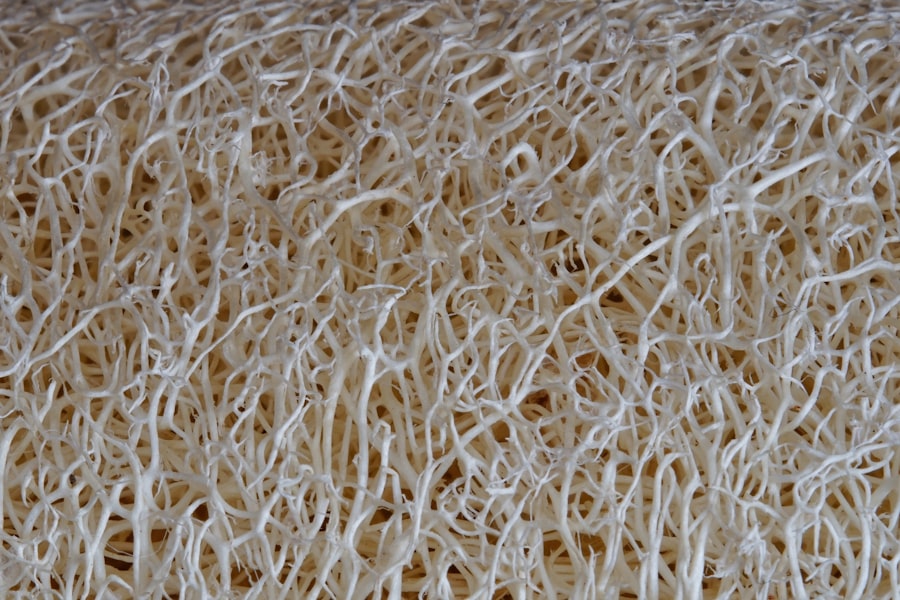In recent years, the conversation around nutrition has increasingly highlighted the importance of a high fiber diet. As you navigate the world of healthy eating, you may have come across various recommendations urging you to increase your fiber intake. But what exactly does this mean for you?
A high fiber diet typically includes a variety of foods rich in dietary fiber, which is a type of carbohydrate that your body cannot digest. This means that fiber passes through your digestive system relatively intact, providing numerous health benefits along the way. Embracing a high fiber diet can be a transformative step toward improving your overall health.
Not only does it support digestive function, but it also plays a crucial role in weight management, cholesterol control, and blood sugar regulation. As you delve deeper into the world of fiber, you will discover how incorporating more fiber-rich foods into your meals can lead to a healthier lifestyle. Understanding the significance of fiber is essential for making informed dietary choices that can enhance your well-being.
Key Takeaways
- High fiber diet is essential for maintaining a healthy digestive system and overall well-being.
- Fiber plays a crucial role in promoting digestive health by aiding in regular bowel movements and preventing constipation.
- Including fiber in your diet can help with weight management by promoting a feeling of fullness and reducing overall calorie intake.
- Consuming high fiber foods can help lower cholesterol levels and reduce the risk of heart disease.
- Fiber is beneficial for blood sugar control and can help prevent the development of chronic diseases such as diabetes and certain types of cancer.
Understanding the Importance of Fiber in the Diet
Fiber is often categorized into two main types: soluble and insoluble. Soluble fiber dissolves in water and forms a gel-like substance in the digestive tract, which can help regulate blood sugar levels and lower cholesterol. On the other hand, insoluble fiber does not dissolve in water and adds bulk to your stool, promoting regular bowel movements.
Both types of fiber are essential for maintaining a balanced diet, and understanding their unique benefits can empower you to make better food choices. Incorporating adequate amounts of fiber into your daily meals is crucial for achieving optimal health. The recommended daily intake for adults is around 25 grams for women and 38 grams for men, although individual needs may vary based on age and activity level.
By prioritizing fiber-rich foods such as fruits, vegetables, whole grains, legumes, and nuts, you can easily meet these recommendations while enjoying a diverse and satisfying diet. As you become more aware of the importance of fiber, you will likely find it easier to make healthier choices that align with your nutritional goals.
The Role of Fiber in Digestive Health

One of the most well-known benefits of fiber is its positive impact on digestive health. When you consume an adequate amount of fiber, it helps to keep your digestive system running smoothly. Insoluble fiber adds bulk to your stool, making it easier to pass through your intestines and reducing the risk of constipation.
This can lead to more regular bowel movements and a decreased likelihood of developing digestive disorders such as diverticulitis or hemorrhoids. Moreover, soluble fiber plays a vital role in maintaining a healthy gut microbiome. It serves as food for beneficial gut bacteria, promoting their growth and activity.
A healthy gut microbiome is essential for overall health, as it aids in nutrient absorption, supports immune function, and may even influence mood and mental well-being.
The Impact of Fiber on Weight Management
| Study | Findings |
|---|---|
| 1. The Framingham Nutrition Studies | Higher fiber intake was associated with lower body weight and body fat. |
| 2. The National Health and Nutrition Examination Survey (NHANES) | Individuals with higher fiber intake had lower body weight and lower risk of obesity. |
| 3. The Women’s Health Initiative Observational Study | Higher fiber intake was associated with lower body weight and reduced risk of gaining weight. |
If you’re looking to manage your weight effectively, increasing your fiber intake can be a game-changer. High-fiber foods tend to be more filling than their low-fiber counterparts, which means they can help you feel satisfied for longer periods. When you consume foods rich in fiber, such as whole grains, fruits, and vegetables, you are less likely to overeat or reach for unhealthy snacks between meals.
Additionally, fiber slows down the digestion process, leading to a gradual release of energy and preventing spikes in blood sugar levels. This steady energy release can help curb cravings and reduce the likelihood of binge eating. By incorporating more high-fiber foods into your meals, you can create a sustainable approach to weight management that focuses on nourishing your body rather than restricting calories.
How Fiber Can Help Lower Cholesterol Levels
Another significant benefit of dietary fiber is its ability to help lower cholesterol levels. Soluble fiber, in particular, has been shown to reduce levels of low-density lipoprotein (LDL) cholesterol, often referred to as “bad” cholesterol. When you consume soluble fiber, it binds with cholesterol in the digestive system and helps eliminate it from the body before it can enter the bloodstream.
By incorporating foods high in soluble fiber—such as oats, beans, lentils, and certain fruits like apples and citrus—you can take proactive steps toward improving your heart health. Lowering LDL cholesterol levels can significantly reduce your risk of heart disease and stroke. As you focus on increasing your fiber intake, you are not only enhancing your overall health but also taking important measures to protect your cardiovascular system.
The Benefits of Fiber for Blood Sugar Control

For those concerned about blood sugar levels or managing diabetes, dietary fiber can be an invaluable ally. High-fiber foods have a low glycemic index, meaning they cause a slower rise in blood sugar levels compared to refined carbohydrates. This gradual increase allows for better blood sugar control and can help prevent spikes that may lead to fatigue or cravings.
Incorporating more fiber into your meals can also improve insulin sensitivity, which is crucial for maintaining stable blood sugar levels. Foods rich in both soluble and insoluble fiber—such as whole grains, legumes, fruits, and vegetables—can help you achieve better glycemic control while providing essential nutrients. By making mindful choices about the types of carbohydrates you consume, you can support your overall health and well-being.
Fiber and its Role in Preventing Chronic Diseases
The benefits of dietary fiber extend beyond digestive health and weight management; they also play a significant role in preventing chronic diseases. Research has shown that individuals who consume a high-fiber diet are at a lower risk for developing conditions such as type 2 diabetes, heart disease, and certain types of cancer. The protective effects of fiber are attributed to its ability to improve various metabolic markers and reduce inflammation in the body.
By prioritizing high-fiber foods in your diet, you are taking proactive steps toward reducing your risk of these chronic diseases. Whole grains, fruits, vegetables, nuts, and seeds are all excellent sources of dietary fiber that can contribute to long-term health benefits. As you embrace a high-fiber lifestyle, you may find that not only do you feel better physically but also experience improved mental clarity and emotional well-being.
Incorporating High Fiber Foods into Your Diet
Incorporating high-fiber foods into your daily meals doesn’t have to be complicated or overwhelming. Start by gradually adding more fruits and vegetables to your plate; aim for at least five servings per day. Whole grains are another excellent source of fiber—consider swapping out white rice or pasta for brown rice or whole grain alternatives.
Legumes such as beans, lentils, and chickpeas are not only rich in fiber but also provide protein and essential nutrients. You can easily add them to salads, soups, or stews for an extra boost of nutrition. Nuts and seeds are also great options; sprinkle them on yogurt or oatmeal for added texture and flavor while increasing your fiber intake.
Tips for Increasing Fiber Intake
To successfully increase your fiber intake, consider implementing small changes to your eating habits over time. Start by reading food labels; look for products that contain at least 3 grams of fiber per serving. Gradually introduce new high-fiber foods into your diet rather than making drastic changes all at once—this will help your digestive system adjust more comfortably.
Another effective strategy is to plan your meals around high-fiber ingredients. For example, when preparing breakfast, opt for oatmeal topped with fresh fruit or whole grain toast with avocado. When snacking, choose raw vegetables with hummus or a piece of fruit instead of processed snacks.
By being intentional about your food choices and experimenting with new recipes, you’ll find it easier to increase your fiber intake while enjoying delicious meals.
Potential Risks and Precautions of a High Fiber Diet
While a high-fiber diet offers numerous health benefits, it’s essential to approach it mindfully. Rapidly increasing your fiber intake can lead to digestive discomfort such as bloating or gas. To avoid these issues, gradually increase your fiber consumption over several days or weeks while ensuring you’re drinking plenty of water to help facilitate digestion.
Additionally, some individuals may have specific dietary restrictions or medical conditions that require them to limit certain types of fiber or specific foods. If you’re unsure about how much fiber is appropriate for you or if you have any concerns about potential interactions with medications or existing health conditions, it’s always best to consult with a healthcare professional or registered dietitian.
Embracing a High Fiber Diet for a Healthier Lifestyle
In conclusion, embracing a high-fiber diet can significantly enhance your overall health and well-being. From supporting digestive health to aiding in weight management and reducing the risk of chronic diseases, the benefits of dietary fiber are vast and varied. By understanding the importance of both soluble and insoluble fiber and incorporating more high-fiber foods into your meals, you can take proactive steps toward achieving a healthier lifestyle.
As you embark on this journey toward increased fiber intake, remember that small changes can lead to significant improvements over time. With patience and persistence, you’ll find that adopting a high-fiber diet not only nourishes your body but also empowers you to make informed choices that support long-term health. Embrace this opportunity to transform your eating habits and enjoy the many rewards that come with prioritizing dietary fiber in your daily life.
A high fiber diet is essential for maintaining good digestive health, especially as we age. It can help prevent constipation, lower cholesterol levels, and regulate blood sugar. For seniors, incorporating more fiber into their diet can significantly improve their overall well-being. An article that delves deeper into the benefits of a high fiber diet for seniors can be found on Explore Senior Health. You can read more about it by visiting this link. This resource provides valuable insights and tips on how to effectively increase fiber intake in daily meals.
FAQs
What is a high fiber diet?
A high fiber diet is a diet that includes a variety of foods that are high in fiber, such as fruits, vegetables, whole grains, and legumes.
Why is a high fiber diet important?
A high fiber diet is important for maintaining a healthy digestive system, preventing constipation, lowering cholesterol levels, and reducing the risk of developing certain chronic diseases such as heart disease, diabetes, and certain types of cancer.
What are some examples of high fiber foods?
Some examples of high fiber foods include raspberries, pears, apples, bananas, broccoli, carrots, whole wheat bread, oats, brown rice, quinoa, lentils, and black beans.
How much fiber should I consume in a day?
The recommended daily intake of fiber is 25 grams for women and 38 grams for men. However, individual needs may vary based on age, sex, and level of physical activity.
What are the potential side effects of a high fiber diet?
Some potential side effects of a high fiber diet include bloating, gas, and diarrhea, especially if you increase your fiber intake too quickly. It’s important to gradually increase fiber intake and drink plenty of water to help prevent these side effects.
Can a high fiber diet help with weight loss?
Yes, a high fiber diet can help with weight loss by promoting feelings of fullness and reducing overall calorie intake. Additionally, high fiber foods tend to be lower in calories and higher in nutrients, making them a good choice for weight management.
